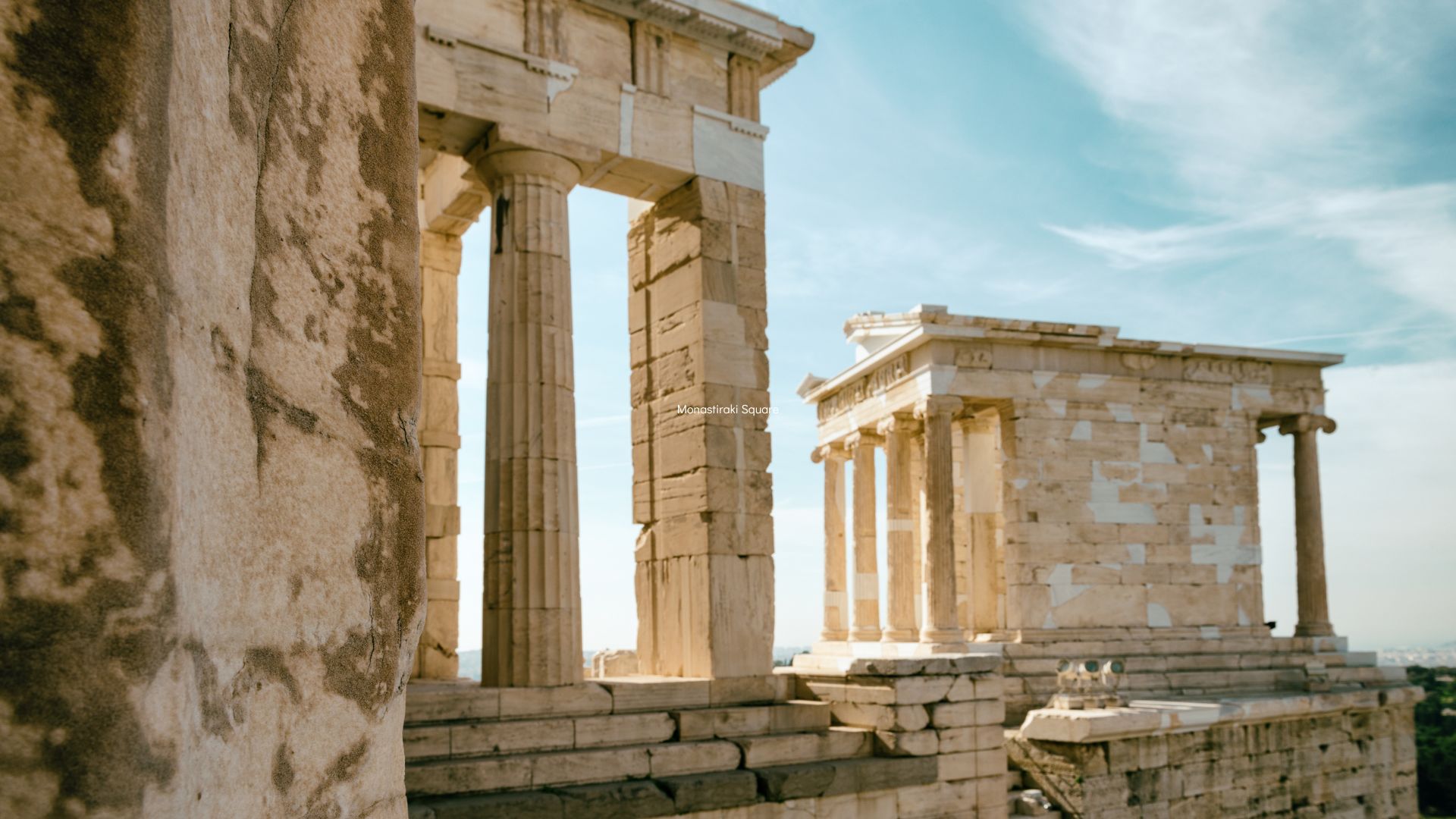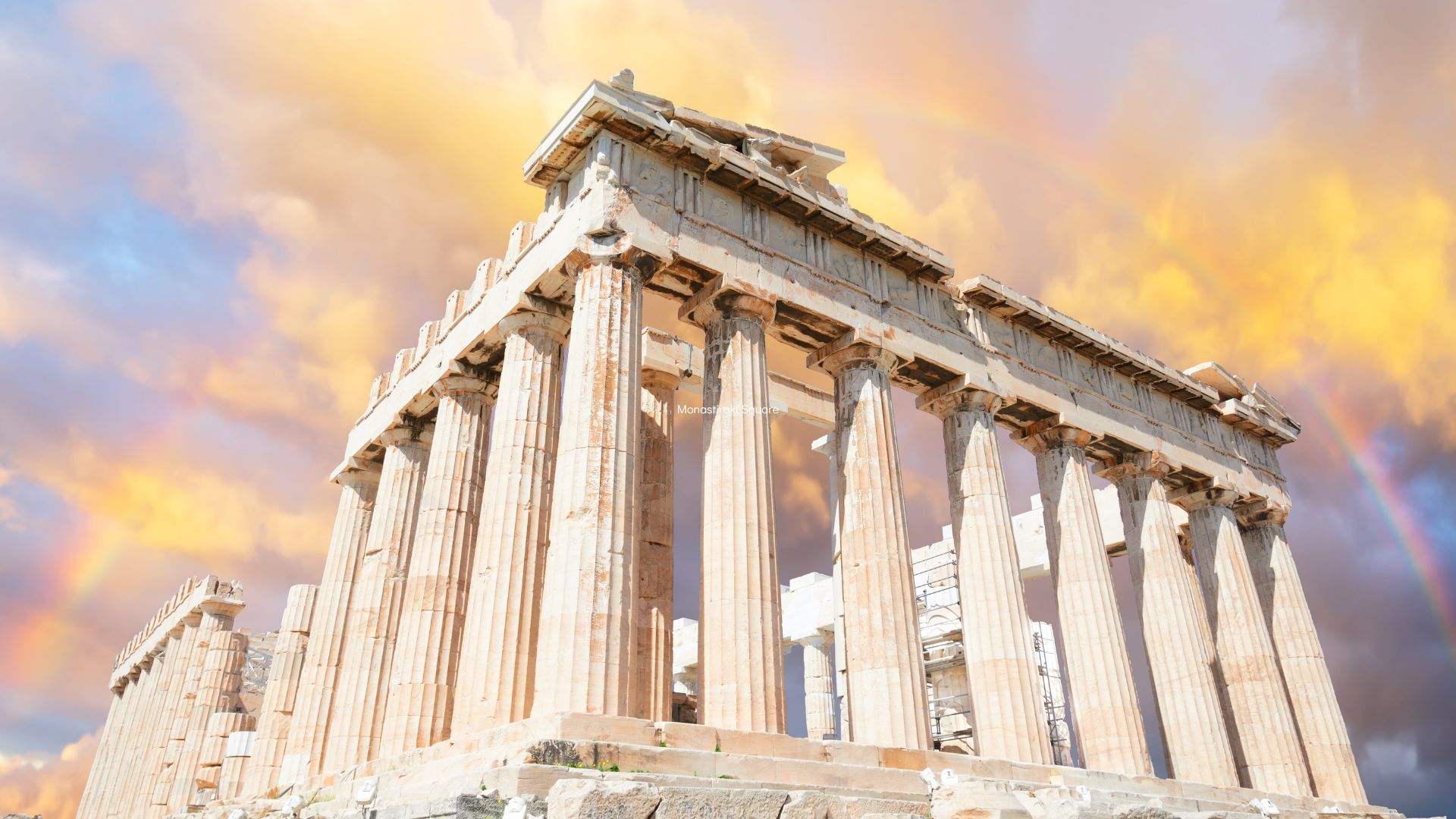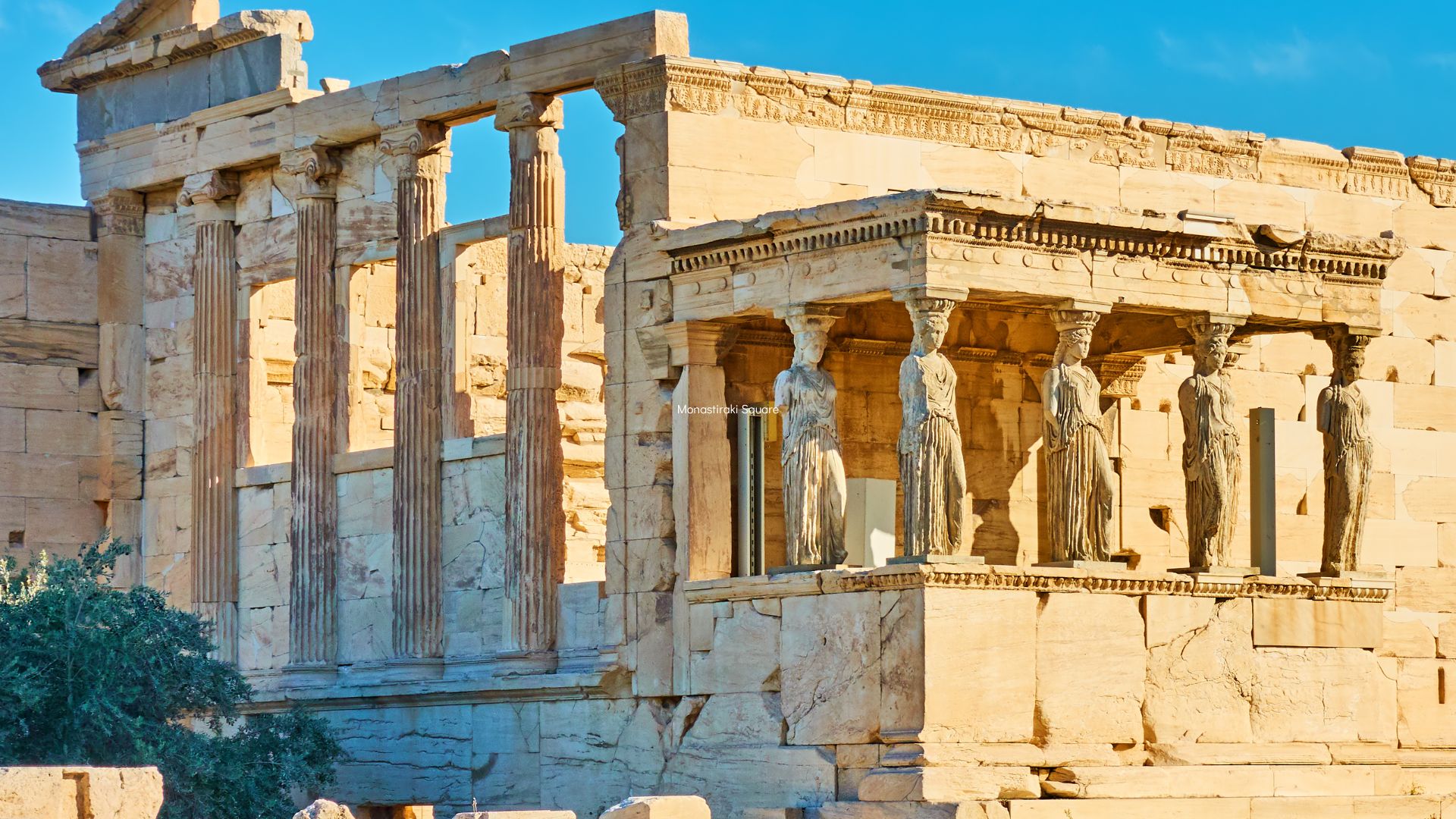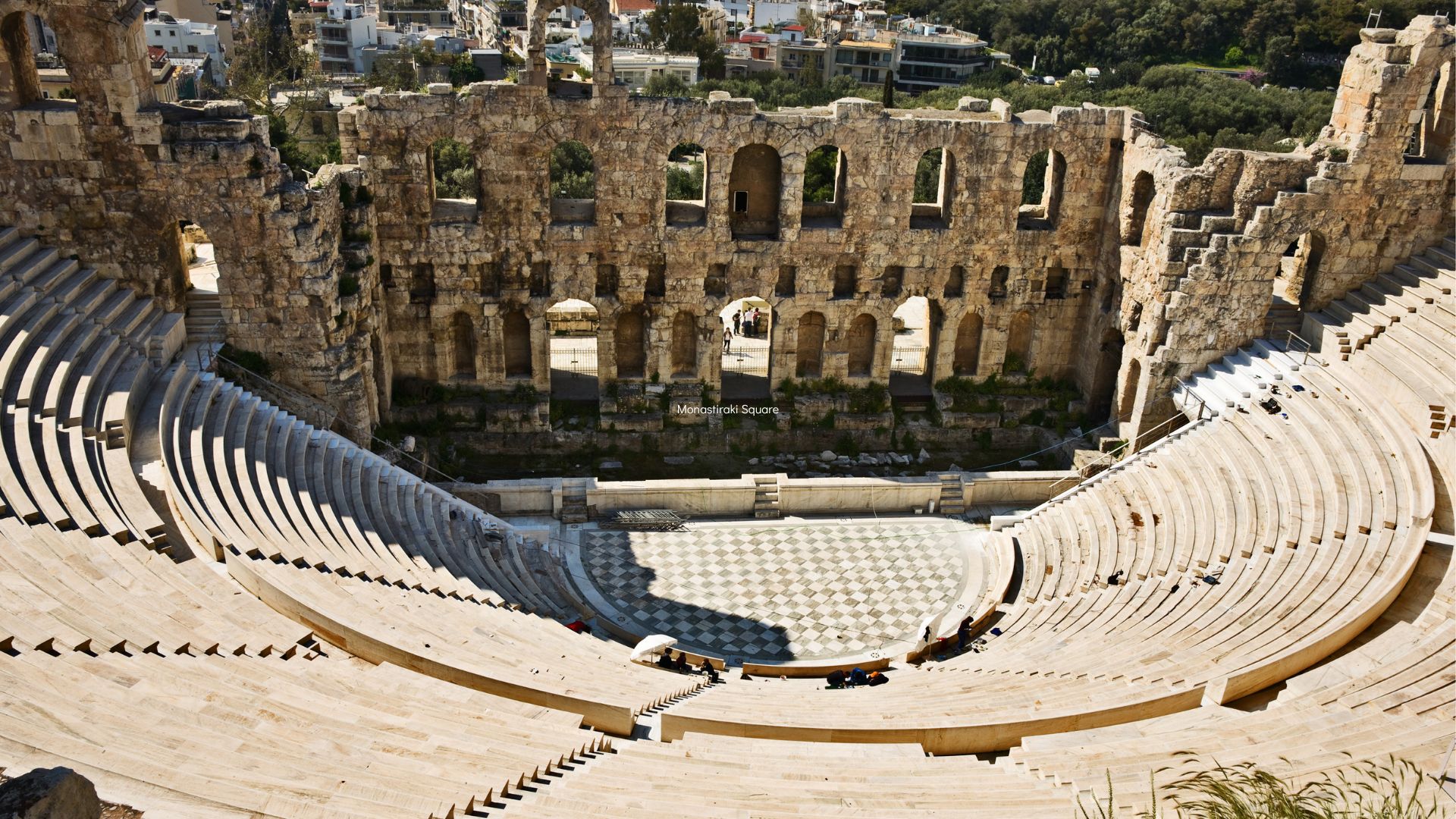A question that often goes unasked by visitors to Athens is: why here? Why did this once tiny settlement grow to dominate much of the Mediterranean? What about the small hills spilling into the peaceful Aegean would give it such a lasting influence through history? There are no easy answers, but by touring the Acropolis and getting to know its temples, artwork, and theaters, a few answers start to materialize.
It would be an understatement to say that the early Mediterranean world was a complicated and crowded place. Civilizations from North Africa, Southern Europe, and the Middle East all vied for control over the ripe lands and profitable trade routes between regions. Some of these civilizations peaked too early, while some would be just a hair behind a competitor, resulting in their demise. As a result of the ongoing conflicts, the Mediterranean world itself would be dominated by many civilizations before the Athenians would become the superpower. The Hittites, Phoenicians, Assyrians, and Carthaginians (among others) are all examples of vast, lavish civilizations which, with the exception of Carthage, rose and fell in prominence before the Athenian “empire” even came to be.
In the case of Athens, there are some obvious geographical reasons it would come to be so dominant-- mainly it juts sharply into the Mediterranean, and makes for a great stopping point for trade between North Africa, the Middle East, and Southern Europe. Beyond that, however, there are more subtle cultural reasons it was able to survive and grow into the juggernaut it became. Parts of this are because of the innovations of its political systems, parts are because of the beauty of its art.
Whatever the case may be, there was a singular place which came to embody all of the cultural, political, and philosophical aspects of the city. This hill, known today as the Acropolis, has endured over two millennia of other empires rising and falling; it has weathered earthquakes, wars, famines, and revolutions; its distinctive architecture has been replicated throughout history, while some of its best art and artifacts have been pillaged and scattered around the world.
But what exactly is the Acropolis? Much like the Forum in Rome, the term Acropolis has become synonymous with a single place, but started out describing simply the highest point in a city. Today, the Athenian Acropolis is easily the most famous. On these acropoli communities built temples and monuments to their gods-- structures to celebrate the pinnacle of human ingenuity and thus, the best they could do to honor those gods.
The Acropolis of Athens has evidence of inhabitance from as far back as the 6th millennium BC, but the first permanent building seems to be a Mycenaean megaron palace, built around 1300 BC. Fortifications would soon follow, and development would continue for nearly a thousand years. Much of what remains today, however, was part of a sprawling public works project meant to modernize and update the city taken part in the mid 5th century BC.
Starting up the hill, it is easy even today to understand why this civilization created such a vivid impression.
Propylaea
Entering the Acropolis via its most traditional route will take one through the remains of the famous gate known as the Propylaea. This structure stood as a portal or gate which divided the more secular world of everyday Athens from the sacred and holy temples which stood within its confines. Built around the same time as the Parthenon, the Propylaea would stand as a dominant reminder to the citizens of the strength and permanence of the Athenians state. Unique among Greek buildings, the Propylaea used horizontal beams across the roof, which were supported by iron girders. This makes it one of only two known buildings in the Greek world which used metal in its construction. Its most famous descendant today is the Brandenburg Gate in Berlin.

The Parthenon
Many of the ruins we see today on the Acropolis came about during a particular “Golden Age” of Athens that stretched through the 5th century BC. In the wake of the Athenian victories in the Persian Wars, the statesman Pericles started a major building campaign on top of the hill to modernize and replace the more provincial temples from before. The central building within his master plan was a temple dedicated to the patron deity of Athens-- Athena. Started in 447 BC with Pentelic marble, mined about 14 miles away, the Parthenon would take nine years for the main structure to finish, and another six years for the decorations. The building would be the crowning jewel of the Mediterranean, watching with dignity for more than 2,000 years before an explosion turned it to the ruins it appears as today.

The Erechtheion
Where the Parthenon epitomizes Athenian culture and comes with a clear lineage and purpose, its (likely) contemporary, the Erechtheion, embodies the lingering mysteries of the ancient city. The Erechtheion is one of the more puzzling ruins left on the Acropolis: the architecture is as grand as it’s many neighbors, but it's asymmetrical design eschews traditional Greek aesthetic principles; modern scholars are still debating its original purpose, with some proposing it is the Temple of Athena Polias, which was dedicated to the dual worship of Athena and Poseiden, while others argue it could have had an entirely different function. It’s anomalous nature is most evidenced by the beautiful “Porch of the Maidens”, which preserves several Caryatids as columns, a truly one of a kind element in Greek ruins.

Temple of Athena Nike
Another of the more intact landmarks is the Temple of Athena Nike, which stood just outside of the Propylaea. This temple, like the Parthenon, celebrated the goddess Athena, but combined that worship with that of the goddess of victory, Nike. A smaller, less imposing temple, it is still remarkable for its restrained elegance, and for the superiority of its friezes.
Theater of Dionysus
Though technically on the slopes of the Acropolis, the theater is notable for showing another side of Athenian culture-- the side that loved drama, comedy, and spectacle. This theater is estimated to have sat as many as 25,000 people.

The resiliency of the Athenian identity is bound up in the Acropolis. The city which helped start the original Olympics, Democracy, and laid the foundation for most of western Art, Philosophy, and Mathematics, is synonymous with the Acropolis. The buildings have served as reminders of this golden age, and have inspired architects, politicians, theologians, scientists, philosophers, etc. across the millenia.

